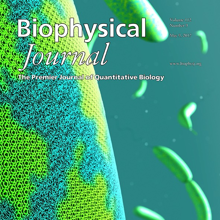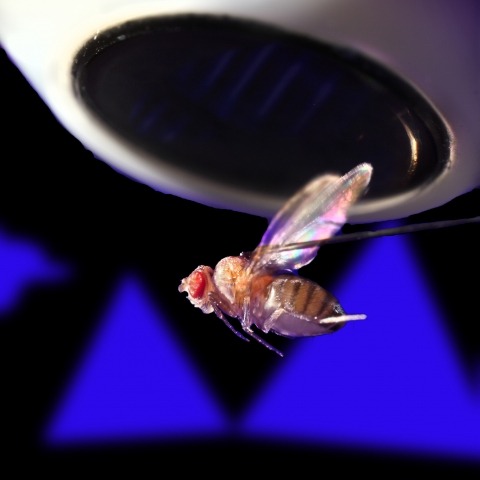Filter
Associated Lab
- Aso Lab (1) Apply Aso Lab filter
- Betzig Lab (2) Apply Betzig Lab filter
- Branson Lab (1) Apply Branson Lab filter
- Cardona Lab (1) Apply Cardona Lab filter
- Darshan Lab (1) Apply Darshan Lab filter
- Druckmann Lab (3) Apply Druckmann Lab filter
- Grigorieff Lab (2) Apply Grigorieff Lab filter
- Harris Lab (1) Apply Harris Lab filter
- Hess Lab (2) Apply Hess Lab filter
- Jayaraman Lab (2) Apply Jayaraman Lab filter
- Keller Lab (1) Apply Keller Lab filter
- Lavis Lab (2) Apply Lavis Lab filter
- Lee (Albert) Lab (1) Apply Lee (Albert) Lab filter
- Lippincott-Schwartz Lab (1) Apply Lippincott-Schwartz Lab filter
- Liu (Zhe) Lab (1) Apply Liu (Zhe) Lab filter
- Riddiford Lab (1) Apply Riddiford Lab filter
- Romani Lab (3) Apply Romani Lab filter
- Rubin Lab (2) Apply Rubin Lab filter
- Saalfeld Lab (1) Apply Saalfeld Lab filter
- Spruston Lab (1) Apply Spruston Lab filter
- Svoboda Lab (2) Apply Svoboda Lab filter
- Tebo Lab (1) Apply Tebo Lab filter
- Truman Lab (1) Apply Truman Lab filter
- Turner Lab (1) Apply Turner Lab filter
- Zlatic Lab (1) Apply Zlatic Lab filter
Publication Date
- May 31, 2017 (1) Apply May 31, 2017 filter
- May 30, 2017 (3) Apply May 30, 2017 filter
- May 24, 2017 (1) Apply May 24, 2017 filter
- May 22, 2017 (4) Apply May 22, 2017 filter
- May 18, 2017 (2) Apply May 18, 2017 filter
- May 17, 2017 (3) Apply May 17, 2017 filter
- May 13, 2017 (1) Apply May 13, 2017 filter
- May 12, 2017 (2) Apply May 12, 2017 filter
- May 9, 2017 (3) Apply May 9, 2017 filter
- May 5, 2017 (2) Apply May 5, 2017 filter
- May 4, 2017 (1) Apply May 4, 2017 filter
- May 3, 2017 (2) Apply May 3, 2017 filter
- May 2, 2017 (1) Apply May 2, 2017 filter
- May 1, 2017 (1) Apply May 1, 2017 filter
- Remove May 2017 filter May 2017
- Remove 2017 filter 2017
Type of Publication
27 Publications
Showing 11-20 of 27 resultsThe insect juvenile hormone receptor is a basic helix-loop-helix (bHLH), Per-Arnt-Sim (PAS) domain protein, a novel type of hormone receptor. In higher flies like Drosophila, the ancestral receptor germ cell-expressed (gce) gene has duplicated to yield the paralog Methoprene-tolerant (Met). These paralogous receptors share redundant function during development but play unique roles in adults. Some aspects of JH function apparently require one receptor or the other. To provide a foundation for studying JH receptor function, we have recapitulated endogenous JH receptor expression with single cell resolution. Using Bacteria Artificial Chromosome (BAC) recombineering and a transgenic knock-in, we have generated a spatiotemporal expressional atlas of Metand gce throughout development. We demonstrate JH receptor expression in known JH target tissues, in which temporal expression corresponds with periods of hormone sensitivity. Larval expression largely supports the notion of functional redundancy. Furthermore, we provide the neuroanatomical distribution of JH receptors in both the larval and adult central nervous system, which will serve as a platform for future studies regarding JH action on insect behavior.
Elucidating the diversity and spatial organization of cell types in the brain is an essential goal of neuroscience, with many emerging technologies helping to advance this endeavor. Using a new in situ hybridization method that can measure the expression of hundreds of genes in a given mouse brain section (amplified seqFISH), Shah et al. (2016) describe a spatial organization of hippocampal cell types that differs from previous reports. In seeking to understand this discrepancy, we find that many of the barcoded genes used by seqFISH to characterize this spatial organization, when cross-validated by other sensitive methodologies, exhibit negligible expression in the hippocampus. Additionally, the results of Shah et al. (2016) do not recapitulate canonical cellular hierarchies and improperly classify major neuronal cell types. We suggest that, when describing the spatial organization of brain regions, cross-validation using multiple techniques should be used to yield robust and informative cellular classification. This Matters Arising paper is in response to Shah et al. (2016), published in Neuron. See also the response by Shah et al. (2017), published in this issue.
Persistent neural activity maintains information that connects past and future events. Models of persistent activity often invoke reverberations within local cortical circuits, but long-range circuits could also contribute. Neurons in the mouse anterior lateral motor cortex (ALM) have been shown to have selective persistent activity that instructs future actions. The ALM is connected bidirectionally with parts of the thalamus, including the ventral medial and ventral anterior-lateral nuclei. We recorded spikes from the ALM and thalamus during tactile discrimination with a delayed directional response. Here we show that, similar to ALM neurons, thalamic neurons exhibited selective persistent delay activity that predicted movement direction. Unilateral photoinhibition of delay activity in the ALM or thalamus produced contralesional neglect. Photoinhibition of the thalamus caused a short-latency and near-complete collapse of ALM activity. Similarly, photoinhibition of the ALM diminished thalamic activity. Our results show that the thalamus is a circuit hub in motor preparation and suggest that persistent activity requires reciprocal excitation across multiple brain areas.
Seconds-scale network states, affecting many neurons within a network, modulate neural activity by complementing fast integration of neuron-specific inputs that arrive in the milliseconds before spiking. Non-rhythmic subthreshold dynamics at intermediate timescales, however, are less well-characterized. We found, using automated whole cell patch clamping in vivo, that spikes recorded in CA1 and barrel cortex in awake mice are often preceded not only by monotonic voltage rises lasting milliseconds, but also by more gradual (lasting 10s-100s of ms) depolarizations. The latter exert a gating function on spiking, in a fashion that depends on the gradual rise duration: the probability of spiking was higher for longer gradual rises, even controlling for the amplitude of the gradual rises. Barrel cortex double-autopatch recordings show that gradual rises are shared across some but not all neurons. The gradual rises may represent a new kind of state, intermediate both in timescale and in proportion of neurons participating, which gates a neuron's ability to respond to subsequent inputs.
Life scientists often desire to display the signal from two different molecular probes as a single colour image, so as to convey information about the probes' relative concentrations as well as their spatial corelationship. Traditionally, such colour images are created through a merge display, where each greyscale signal is assigned to different channels of an RGB colour image. However, human perception of colour and greyscale intensity is not equivalent. Thus, a merged image display conveys to the typical viewer only a subset of the absolute and relative intensity information present in and between two greyscale images. The Commission Internationale de l'Eclairage L*a*b* colour space (CIELAB) has been designed to specify colours according to the perceptually defined quantities of hue (perceived colour) and luminosity (perceived brightness). Here, we use the CIELAB colour space to encode two dimensions of information about two greyscale images within these two perceptual dimensions of a single colour image. We term our method a Perceptually Uniform Projection display and show using biological image examples how these displays convey more information about two greyscale signals than comparable RGB colour space-based techniques.
Animals exhibit a behavioral response to novel sensory stimuli about which they have no prior knowledge. We have examined the neural and behavioral correlates of novelty and familiarity in the olfactory system of Drosophila. Novel odors elicit strong activity in output neurons (MBONs) of the α'3 compartment of the mushroom body that is rapidly suppressed upon repeated exposure to the same odor. This transition in neural activity upon familiarization requires odor-evoked activity in the dopaminergic neuron innervating this compartment. Moreover, exposure of a fly to novel odors evokes an alerting response that can also be elicited by optogenetic activation of α'3 MBONs. Silencing these MBONs eliminates the alerting behavior. These data suggest that the α'3 compartment plays a causal role in the behavioral response to novel and familiar stimuli as a consequence of dopamine-mediated plasticity at the Kenyon cell-MBONα'3 synapse.
Ring attractors are a class of recurrent networks hypothesized to underlie the representation of heading direction. Such network structures, schematized as a ring of neurons whose connectivity depends on their heading preferences, can sustain a bump-like activity pattern whose location can be updated by continuous shifts along either turn direction. We recently reported that a population of fly neurons represents the animal's heading via bump-like activity dynamics. We combined two-photon calcium imaging in head-fixed flying flies with optogenetics to overwrite the existing population representation with an artificial one, which was then maintained by the circuit with naturalistic dynamics. A network with local excitation and global inhibition enforces this unique and persistent heading representation. Ring attractor networks have long been invoked in theoretical work; our study provides physiological evidence of their existence and functional architecture.
We present semiparametric spectral modeling of the complete larval Drosophila mushroom body connectome. Motivated by a thorough exploratory data analysis of the network via Gaussian mixture modeling (GMM) in the adjacency spectral embedding (ASE) representation space, we introduce the latent structure model (LSM) for network modeling and inference. LSM is a generalization of the stochastic block model (SBM) and a special case of the random dot product graph (RDPG) latent position model, and is amenable to semiparametric GMM in the ASE representation space. The resulting connectome code derived via semiparametric GMM composed with ASE captures latent connectome structure and elucidates biologically relevant neuronal properties.
Animal development is orchestrated by spatio-temporal gene expression programmes that drive precise lineage commitment, proliferation and migration events at the single-cell level, collectively leading to large-scale morphological change and functional specification in the whole organism. Efforts over decades have uncovered two 'seemingly contradictory' mechanisms in gene regulation governing these intricate processes: (i) stochasticity at individual gene regulatory steps in single cells and (ii) highly coordinated gene expression dynamics in the embryo. Here we discuss how these two layers of regulation arise from the molecular and the systems level, and how they might interplay to determine cell fate and to control the complex body plan. We also review recent technological advancements that enable quantitative analysis of gene regulation dynamics at single-cell, single-molecule resolution. These approaches outline next-generation experiments to decipher general principles bridging gaps between molecular dynamics in single cells and robust gene regulations in the embryo.


